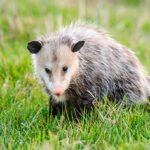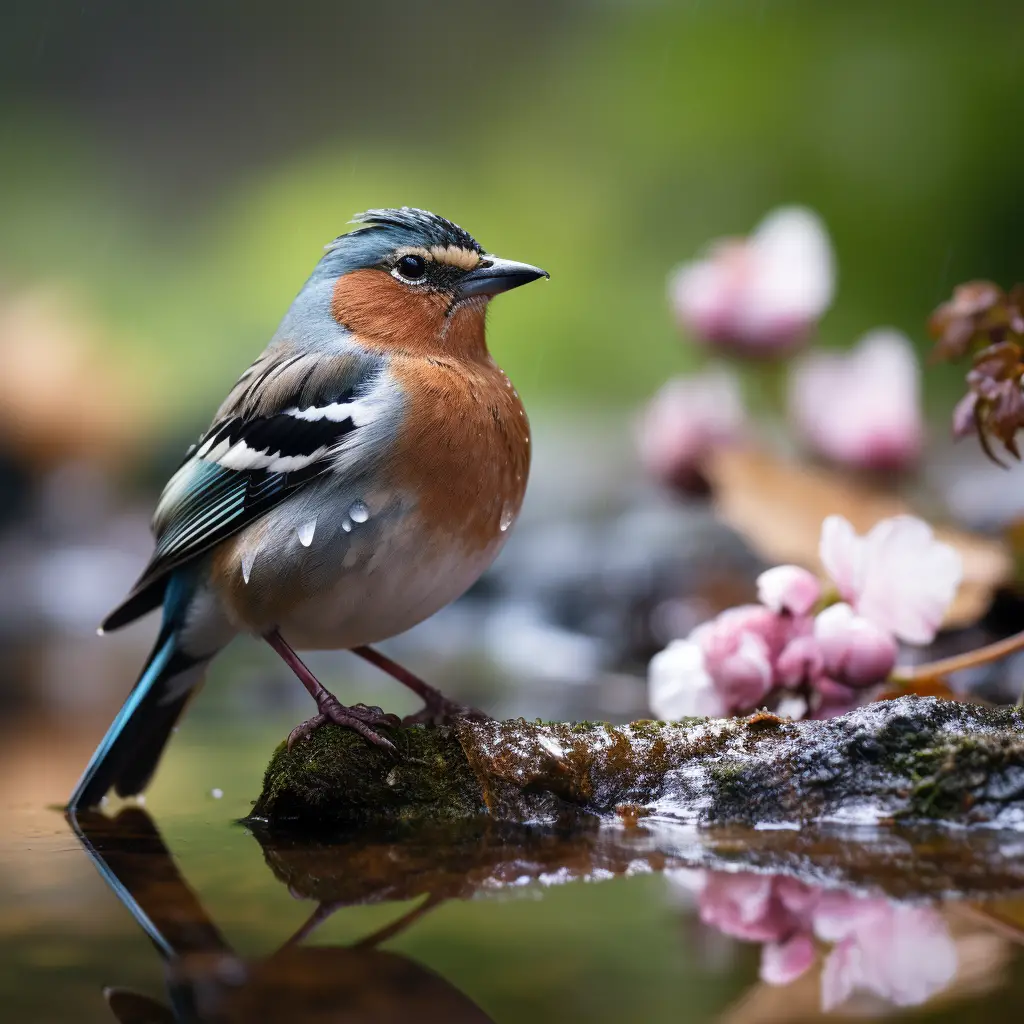
Butterflies, the epitome of nature’s elegance, play a pivotal role in plant pollination. Their populations, however, have been declining due to rampant property development and pesticide use. We can support these essential creatures by fashioning an exquisite butterfly garden in our outdoor spaces. Here, we will guide you through the steps to create a butterfly haven that could outshine other gardens.
Providing a Home for the Winged Wonders
Butterflies enhance the beauty and health of our environment. Their dwindling numbers, primarily due to property development and large-scale farming, demand our attention and intervention. As homeowners, we can lend a helping hand by creating a butterfly haven right in our backyards. Let’s delve into some expert tips to design a butterfly garden successfully.
Building Your Butterfly Paradise: A Comprehensive Guide
Fashioning a butterfly-friendly environment encourages these magnificent creatures to frequent your garden, reproduce, and enrich the ecosystem. This process can be effectively achieved by following these guidelines:
1. Planning with Precision
Planning with precision is a key aspect of successful gardening. It involves careful consideration and deliberate decision-making to optimize the use of space, resources, and time. When applied to gardening, precision planning can result in a more productive, efficient, and visually appealing garden.
To start, assess the available space and its characteristics. Consider factors such as sunlight exposure, soil quality, drainage, and microclimates. This information will guide your plant selection and placement, ensuring that each plant receives the ideal conditions for growth.
Next, create a detailed layout or design plan for your garden. Determine the optimal placement of plants, taking into account their growth habits, height, and spacing requirements. Consider companion planting, where compatible plants are grown together to maximize space and deter pests. By planning with precision, you can avoid overcrowding, optimize air circulation, and prevent competition for resources.
Incorporate a planting schedule to maximize productivity throughout the growing season. Consider the maturity and harvest times of different plants, staggering their planting accordingly. This approach ensures a continuous supply of fresh produce and avoids overwhelming harvest periods.
Precision planning also involves the efficient use of resources. Consider water conservation techniques such as drip irrigation or rainwater harvesting. Plan for proper soil amendment and mulching to improve fertility and moisture retention. Additionally, incorporate composting and recycling practices to minimize waste and enhance soil health.
Regular monitoring and record-keeping are vital aspects of precision planning. Observe plant growth, identify pest or disease issues early, and take appropriate action. Maintain records of planting dates, yields, and observations to evaluate and improve your gardening practices over time.
In summary, precision planning in gardening involves careful assessment, strategic layout, and efficient resource management. By considering the specific needs of your plants, optimizing space and resources, and implementing monitoring and record-keeping practices, you can create a garden that thrives and yields bountiful rewards.
2. Catering to Dietary Needs

Adult butterflies consume liquid food sources. They sip nectar and other fluids using their long, tubular tongue and also feed on tree sap, fallen fruit, and even animal dung. Butterfly larvae feed on leafy food plants like milkweed foliage, parsley, and fennel, providing a learning opportunity for children to create DIY butterfly feeders.
Catering to the dietary needs of butterflies in a butterfly garden is essential for creating a thriving and inviting habitat. To meet their needs, it is crucial to provide a diverse selection of nectar sources and host plants. Selecting a variety of flowering plants, such as butterfly bush, milkweed, coneflowers, zinnias, lantanas, and salvias, ensures a rich and abundant nectar supply throughout the garden.
Additionally, incorporating specific host plants that cater to the local butterfly species allows for successful breeding and the development of caterpillars. Avoiding pesticides and opting for organic pest control methods helps maintain a healthy environment for butterflies and other beneficial insects. Providing water sources and ensuring access to sunlight and shelter are also important considerations. By planning the garden to offer a continuous supply of nectar and host plants across different seasons, the butterfly garden becomes a haven that supports the complete life cycle of butterflies and attracts a diverse array of species.
3. Offering Shelter and Safety
Butterflies need shelter to hide from predators and adverse weather conditions. Plant trees and shrubs to provide windbreaks, protection from rain, and roosting spots. You can also create a log pile in a secluded corner for additional safety.
4. Ensuring Hydration
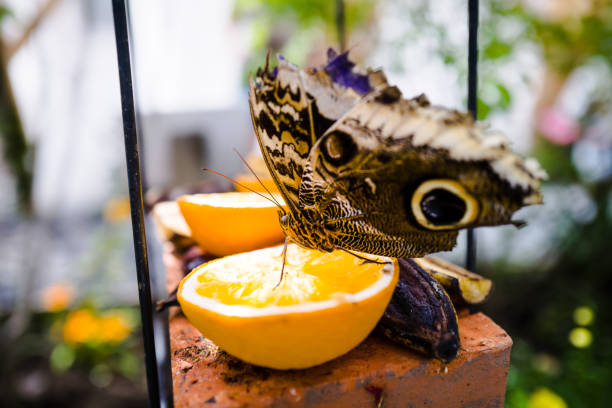
Butterflies source water from shallow puddles or moist sandy areas. Create a birdbath or a saucer filled with water and rocks for butterflies to rest and drink. Ensure you change the water frequently to maintain cleanliness.
5. Basking in Sunlight
Since butterflies are cold-blooded, they require sunlight for energy. Ensure your butterfly garden receives at least 6 hours of sunlight daily, and include areas where early morning sunlight can help them warm up quickly.
6. Planting in Clusters
Planting in clusters is an excellent strategy for creating a vibrant and thriving butterfly garden. By grouping together specific plants, you can create a concentrated source of nectar, host plants, and shelter, all of which are essential for attracting and supporting butterflies throughout their life cycle.
When designing a butterfly garden, select a variety of plants that offer an abundant supply of nectar. Choose species that bloom at different times of the year to provide a continuous food source. Planting these nectar-rich flowers in clusters allows butterflies to easily locate and access the nourishment they need, while also enhancing the visual appeal of the garden.
In addition to nectar plants, include host plants that serve as breeding grounds for butterflies. Different species of butterflies have specific host plant preferences where they lay their eggs. By planting host plants in clusters, you create ample opportunities for butterflies to reproduce and complete their life cycle.
Clusters of plants also provide shelter and resting spots for butterflies. Tall grasses, shrubs, and small trees can create protected areas where butterflies can seek refuge from strong winds or predators. These sheltered spots also act as resting places for weary butterflies, allowing them to conserve energy for their next flight.
In conclusion, planting in clusters is a practical and effective approach for establishing a butterfly garden. By concentrating nectar plants, host plants, and shelter in specific areas, you provide a haven that attracts and supports butterflies throughout their entire life cycle. This not only enhances the beauty of your garden but also contributes to the conservation of these delicate and enchanting creatures.
7. Prioritizing Organic Practices
Avoid chemical fertilizers and pesticides that can harm butterflies and other wildlife. Adopt organic gardening methods to maintain a healthy and safe environment.
Selecting the Right Plants for Your Butterfly Sanctuary
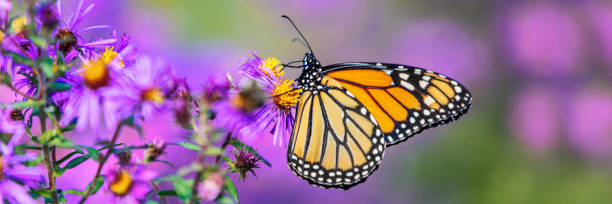
The selection of plants is an essential aspect of building a butterfly-friendly garden. Some plants have evolved over millennia to offer butterflies the nutrients they need for survival. This relationship between butterflies and plants varies by region and species.
Nourishing Butterflies Through Their Lifecycle
To fully support butterflies, include plants that cater to all stages of their lifecycle. Flowering nectar plants offer food and energy for adults, while larval plants like parsley and milkweed feed the caterpillars. Plants that serve as both nectar and food sources are especially valuable for smaller spaces.
Prioritizing Plant Diversity
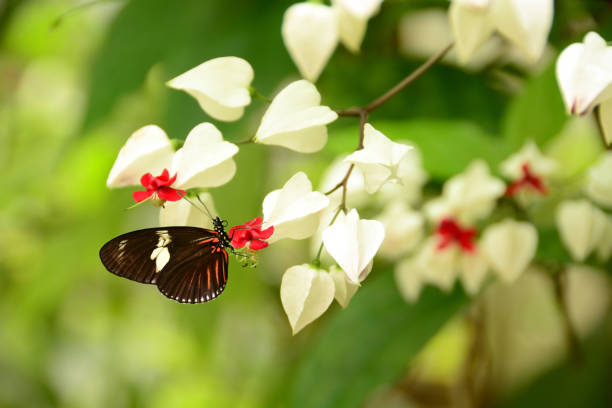
Select a mix of trees, shrubs, perennials, and annuals to create layers that offer nectar sources at different heights. This diverse selection will cater to butterflies who seek nectar at varying levels. Ensure you also choose plants native to your region as they are more likely to be recognized by the local butterfly populations.
Promoting Continuous Bloom and Vibrant Colors
Choose flowering plants that bloom at different times, especially during mid to late summer when butterflies are most active. Opt for fall bloomers such as aster, goldenrod, and Joe Pye weed to support migrating monarch butterflies. Additionally, butterflies are attracted to flowers that are pink, red, orange, white, yellow, and purple, adding vibrant colors to your garden.
For a more comprehensive list, see our guide on the top 25 Butterfly Garden Plants.
Conclusion
Designing a captivating butterfly garden requires careful planning, selection of suitable plants, and maintenance practices that ensure the survival of these beautiful insects. By following these guidelines, you can create a sanctuary that supports the local butterfly populations and contributes to biodiversity. We hope this guide provides you with the necessary steps to create your very own butterfly haven.

